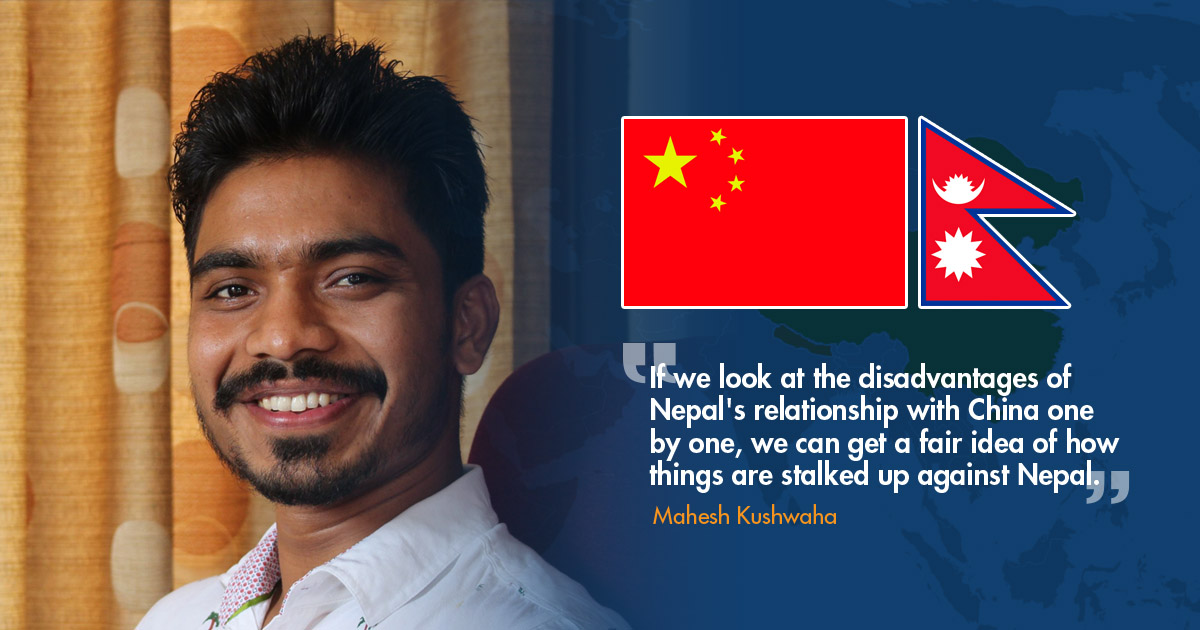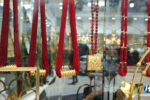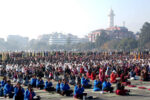The proverbial camel’s nose seems not to worry the Singha Durbar and its current occupants, for as long as it does not enter the tent, there isn’t any danger.
The metaphorical camel here is China and the tent is its neighboring Himalayan state of Nepal. The nose may not seem to bother Nepal’s present dispensation who have dismissed the nosy nose as no danger.
But the issue is not the nose, it is the camel that has made its way into the tent, and is now sitting inside wanting to do what it does best – occupy, slice, and occupy more till it’s all under control.
As China continues to build its presence in Nepal, be it through the encroachments in the Humla district where it has allegedly taken over more than 10 hectares of land, the takeover of local markets by flooding it with cheap Chinese products and wiping out competition from small local and traditional and homegrown businesses or be it the blatant interference with Nepal’s internal politics, there is a growing fear of a takeover of all of the tent, its culture, values, and age-old traditions.
Many are already asking questions like: “What business does any part of a camel have in the tent?” Likewise, others are confident that the camel (read dragon) will expand its claws just about everywhere, and then it would be too late to retaliate.
Furthermore, the repeated intervention by the Chinese Ambassador in Nepal ruling party matters, many times breaking protocols however unbefitting of an ambassador, has to be questioned by one and all.
The trade policies are one-sided and stringent with mostly imports and Chinese dictated tariffs. Analysts observe the fact that Nepal is hardly selling anything outside, it’s all Chinese consumer goods and clothing that are flooding our markets; we now have Chinese educated doctors and engineers, which is ok, but it lacks balance and quality. Also, our goods and rich traditional and social knowledge seem under a threat.
If we look at the disadvantages of Nepal’s relationship with China one by one, we can get a fair idea of how things are stalked up against Nepal.
Let’s start with trade, where while China imports goods worth over US $ 900,000, ranging from the animal, vegetable, food products, metals, chemicals, fuels, textile and clothing, footwear to even hides and skins, Nepal has been struggling to convince China to allow it to export 512 specified goods under the duty-free quota-free provision, which would help to augment Nepal’s local businesses and traders.
Instead, China has offered to allow Nepal duty-free access to 8,030 Nepali goods, which does not benefit the Nepali traders owing to a lack of comparative advantage in the list identified by China.
This one-sided relationship can be seen unfolding in markets at Kathmandu and other smaller cities of the Himalayan country.
An example is Chinese clothing; all over Kathmandu, in the malls and on the streets of Thamel, Chinese clothes are all over.
The easy access and cheaper price at which these clothes are available to both traders and consumers have made it popular, without having to depend on costlier imports from India or other countries.
However, the benefits to traders and consumers notwithstanding, there are real worries which many experts term as “a form of drain and stress on the economy.”
The Chinese products are no doubt benefitting the retail sector, with many people earning to the tune of US $ 20,000 quarterly, which was unthinkable earlier.
But the real issue, besides the trade deficit, is the sub-standard nature of these goods and the impact they are having on our own local products and on small and medium local economies.
Some even fear that one day we may have to be completely dependent on China, which is not ready to even revise export duties on some key Nepalese goods.
But it’s not just the imbalances of trade and dependency on Chinese goods, which in anyways is flooding all over the world.
The other major worry is the way China is using its “friendly” face to also try its now famous and similar salami-slicing tactics in Nepalese territory.
The hullaballoo which was created over the encroachment over land in the Humla district, has created a deep undercurrent of resentment among the Nepalese public.
The Oli administration has tried to play it down, but the fact that a public representative, Jeevan Bahadur Shahi of the Nepali Congress, has as recently as in November said that he felt threatened by a Chinese aggressive rebuttal to the complaint lodged by him and his team about land encroachment by China in Humla does raise some very serious questions about the present Nepal government’s policies on protecting its land from Chinese encroachments.
How the Chinese slicing is taking place the Nepali Congress representative’s fear is certainly worth pondering over. This is what he had said: “I want to reiterate that China will be responsible if anything unfortunate happens to me,” in an interview on Khabarhub.
The Congress legislator had categorically stated that “The Junge Pillar 12 has been recently erected by China. and Pillars 5.1 and 6.1 have been enclosed as there are Chinese security forces.”
In his interviews, Shahi claimed that nine buildings in Lolungjong, Hilsa have come up in the Nepali territory and that these buildings can be seen from Pillar 12 in the hills of Limi Lapcha.
He also alleged that the Chinese government is showing China’s time zone in these areas, therefore making flying or other activities over or on the area by Nepalese people impossible.
These allegations have been labeled by others as well, and the government’s denial of these reports have been widely reported in the media.
Nepal’s ruling party representatives, including the Foreign Minister Pradeep Gyawali, have dismissed concerns of the BRI likely pushing Nepal towards a “debt-trap.”
But what perhaps assumes great significance is the government’s reluctance to address the issue; the encroachment is surely not a figment of anyone’s imagination as the government would want people to believe.
Added to this is the government’s silence on the letter written by the Chinese embassy to the Nepali Congress party.
Not only does this appear to break the norms of diplomatic protocol, but it surely appears that the camel is indeed now trying to assert its presence in different ways inside the tent.
Furthermore, the repeated intervention by the Chinese Ambassador in Nepal ruling party matters, many times breaking protocols however unbefitting of an ambassador, has to be questioned by one and all.
Such aggression and maneuvering by a diplomat on questions of a country’s sovereignty do not augur well, and this must not be allowed to become a precedent.
China is Nepal’s largest source of foreign direct investment and its second-largest trading partner, and its economy has undoubtedly grown over the years.
But the cost of such growth requires immediate assessment, and the future of such strategic alignment with China has to be thought out.
Or else, the slippery slope on which Nepal has stepped will only get more slippery as Nepal’s dependency on China grows, especially as it hopes to develop all its nine ambitions under the framework of the Belt and Road Initiative (BRI).
It has been years since the agreement was signed (May 12, 2017), but these projects are yet to see the light of day.
Nepal’s ruling party representatives, including the Foreign Minister Pradeep Gyawali, have dismissed concerns of the BRI likely pushing Nepal towards a “debt-trap.”
Whatever the outcome of the BRI or the Oli government’s weakness for Chinese virtual transgressions into the internal affairs of its party, one thing is for sure: pushing the camel out of the tent will be near impossible, given Chinese growing influence in the region.
His retort to such concerns, which have been often raised by the US and other western nations, has been “it’s an imported psychology.”
Nepal’s present ruling government K. P. Oli seems in no mood to pay heed to caution from the US State Department or any other international governmental agencies about BRI or its adverse impacts on countries in Asia and Africa.
Whatever the outcome of the BRI or the Oli government’s weakness for Chinese virtual transgressions into the internal affairs of its party, one thing is for sure: pushing the camel out of the tent will be near impossible, given Chinese growing influence in the region.
Moreover, Nepal shares a long border and history with China and needs the latter as much as it needs its other big neighbor India.
But what Nepal’s ruling government and its citizenry must wake up to are questions of how much Nepal should depend on China and at what cost.
Does it need to have a blanket dependency or would it be better to build better and stronger relations with nations where the rules of democracy apply and where all government to government dealings on infrastructure, development, trade, strengthening cultural ties happen in a transparent manner and with concessions and nay through the exploitation of the others resources and territory?









Comment